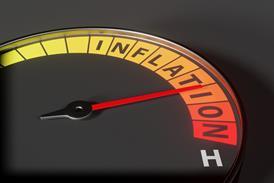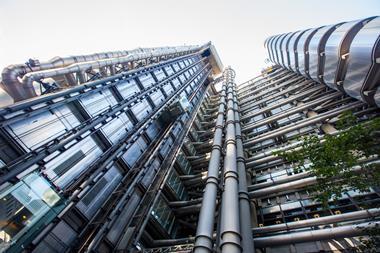From slow growth to a healthy rise in premium income, the personal non-life insurance market has bounced back and the future looks even better. Datamonitor reports on improving conditions for insurers
After years of sluggish growth, the personal non-life insurance industry hit back with a rise in premium income of 8.9%, mostly fuelled by the increases seen in private motor.
The latest returns to the Financial Services Authority (FSA) reveal that in 2000, motor and property lines helped revive the market, while accident and health suffered a major downturn in premium income.
The future looks rosy though. With gross written premiums (GWP) hitting a high of £19.1bn in 2004, there is expected to be a significant rise in premium income over the next few years. But this rise will be slower between 2001 and 2006. However, it is predicted there will be a slight reduction in average annual growth rates to 3.8%, leading to a total personal general insurance market value of £18.9bn in 2006. Domestic property will be at the heart of this growth.
In 2000, the personal general insurance market was worth a massive £15.1bn in gross written premiums, a rise of 8.9% on the figures from 1999. Moreover, the personal general insurance market grew at over three times the average rate of increase recorded between 1996 and 2000. In comparison, the commercial general insurance market grew by just 1.8%, underlining the huge improvements made in personal lines in just 12 months.
This is an incredible speed for any market to grow at and the vast majority of this move was propelled by the rate increases experienced in the private motor sector.
Private motor lines grew by 18% in 2000, with the strongest growth rate shown in comprehensive lines with a 19% increase, as a result of insurers substantially raising premium rates in a bid to offset worsening claims inflation. Domestic property lines also grew in 2000, reversing the decline seen in 1999 and 1998. The 5.2% rise in GWP was driven by insurers trying to match premium income to claims costs, which took a surprise battering in the floods.
| How personal insurance premiums have grown since 1996 | ||||||||
| 1996 | 1997 | 1998 | 1999 | 2000 | Compound | |||
| GWP £m | GWP £m | GWP£m | GWP £m | GWP £m | annual | |||
| growth rate | ||||||||
| 1996-2000 | ||||||||
| Private motor | 5,519 | 5,630 | 6,047 | 6,611 | 7,801 | 9.00% | ||
| Domestic property | 4,824 | 5,089 | 4,875 | 4,708 | 4,952 | 0.70% | ||
| Individual A&H | 2,183 | 2,429 | 2,588 | 2,588 | 2,391 | 2.30% | ||
| Personal totals | 12,526 | 13,148 | 13,510 | 13,907 | 15,144 | 4.90% | ||
| Year-on-year growth | ||||||||
| Private motor | -4.40% | 2.00% | 7.40% | 9.30% | 18.00% | |||
| Domestic property | 7.00% | 5.50% | -4.20% | -3.40% | 5.20% | |||
| Individual A&H | na | 11.30% | 6.60% | 0.00% | -7.60% | |||
| Total personal growth | na | 5.00% | 2.80% | 2.90% | 8.90% | |||
| Market share | ||||||||
| Private motor | 44.10% | 42.80% | 44.80% | 47.50% | 51.50% | |||
| Domestic property | 38.50% | 38.70% | 36.00% | 33.90% | 32.70% | |||
| Individual A&H | 17.40% | 18.50% | 19.20% | 18.60% | 15.80% | |||
| Total | 100.00% | 100.00% | 100.00% | 100.00% | 100.00% | |||
| Source: Datamonitor analysis of SynThesys non-life database | ||||||||
Poor accident
In 2000 the impressive gains made in the personal general insurance market were held back by the downturn in individual accident and health lines. Accident and health insurance witnessed a rise in premium income in both 1997 and 1998 before hitting stagnation in 1999 as GWP remained at £2.6bn.
This sector saw its premium income shrink by 7.6% in 2000 as customers stayed away from this non-essential purchase with a relatively high opportunity cost. Insurers face the perennial problem of attracting new customers as a way to grow their customer base and premium income.
The top ten personal insurers jointly control more than 60% of the market, although their combined dominance has weakened slightly since 1999.
Insurance giant CGNU was the clear market leader in 2000 with 20% of the personal general insurance market share driven upwards by motor growth. This was a marginal rise from 1999, but a reflection of CGNU's concentration on personal lines and profitability.
Royal & SunAlliance remained the second largest personal insurer, although its share of the market dropped by 1.5%. Other insurers have made greater gains in the market in 2000.
Other leading insurers also experienced a fall in market share, but Direct Line leapfrogged its way to become the fourth largest personal general insurer in 2000 with a 7% share of the market. Direct Line benefited greatly from the hardening conditions of the motor market with none of the distractions of the commercial market.
Market hardening
Although the big insurers continued to grow in 2000, with premium income rising by 8.1% for the top ten companies, the rest of the market experienced a higher growth rate of 10.2%, showing that the medium and smaller sized insurers increased their GWP by a greater degree.
Those insurers ranked 11 to 20 in terms of personal GWP witnessed a 25% rise in premium income compared to a market total of 8.9%. This phenomenon can be explained by the general market hardening and also by the restructuring taking place between the top ten players.
After a period of merger and acquisition activity and intense price-based competition, the major personal insurers are now taking the time to integrate their books and shed any excess business that does not fit their new strategic emphasis on profitability. Consequently, medium-sized insurers have been snapping up the `extra' business on the market, leading them to boost their premium income in 2000.
However, this kind of growth cannot be expected to last as the opportunities for soaking up customers in this way decrease. Indeed, Groupama has announced plans to stay in the UK general insurance market, while Churchill acquired the insurance business of Prudential. Instead, medium sized insurers will be forced to grow their business organically in a tough market, where the super-insurers and flexible small players become more competitive.
Across the board, insurers are demanding and introducing considerable rate increases to offset claims costs and grow their business.
The total personal insurance market is expected to grow substantially over the next four years, with premium income reaching £18.9bn in 2006. The slow down between 1996 and 2000 is mainly attributable to the decline of individual accident and health lines and a price war in private motor.
New entrants
Accident and health lines suffered a tumble in premium income in 2000 and this is set to be the trend for 2001 and 2002. GWP will slowly rise as insurers begin to attract new customer segments, leading to an annual average growth rate of 0.04%.
Motor lines will continue to be strong. Premium rates will rise, although not as heavily as in 2000 or 2001. An increase in profitability and the arrival of new entrants will create pressure on premium rates, leading to a return to price based competition in 2004.
Motor lines will grow at an average annual rate of 3.3% until 2006, compared to 9% experienced from 1996 to 2000.
Domestic property, however, will be the sector driving the overall growth of the personal insurance market. Insurers are set to raise premiums in order to combat the rise in flood and weather-related claims.
As insurers acknowledge that flooding in the UK has become a regular event, there will be an annual average increase in property GWP of 6.1% to give a total market value of over £7bn by 2006 and beyond.









































